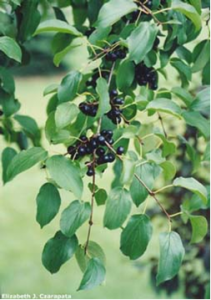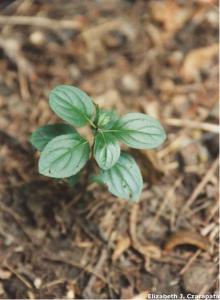 An environmental component was added to the wellness model recently. The premise is that the surroundings you find yourself in have an effect on your well-being. From the quality of the air you breathe to the noise pollution taken in by your ears, your environment can be the cause of that headache you came home with, the restlessness that’s keeping you awake at night, or the content and relaxed feeling that allows peak performance during the day and restful sleep at night. Part of the attraction of a favorite deer hunting spot is the opportunity to wrap oneself in the rejuvenating effects of the natural environment, which for some will bring a sense of peak performance, and for others perhaps that restful sleep (maybe some of both).
An environmental component was added to the wellness model recently. The premise is that the surroundings you find yourself in have an effect on your well-being. From the quality of the air you breathe to the noise pollution taken in by your ears, your environment can be the cause of that headache you came home with, the restlessness that’s keeping you awake at night, or the content and relaxed feeling that allows peak performance during the day and restful sleep at night. Part of the attraction of a favorite deer hunting spot is the opportunity to wrap oneself in the rejuvenating effects of the natural environment, which for some will bring a sense of peak performance, and for others perhaps that restful sleep (maybe some of both).
 But the environmental component of wellness can be spun the other way too. Borrowing President Kennedy’s phrase; it’s not just what the environment can do for you, but what you can do for the environment. By simply purchasing a hunting license and gear, you are making possible the improved health of our wild resources. Through the act of hunting you are hopefully establishing a connection with the land, a sense of place that becomes a part of you. And because of that connection, the actions you take and the decisions you make will be done in the context of protecting that place so that future generations may get to experience what you have.
But the environmental component of wellness can be spun the other way too. Borrowing President Kennedy’s phrase; it’s not just what the environment can do for you, but what you can do for the environment. By simply purchasing a hunting license and gear, you are making possible the improved health of our wild resources. Through the act of hunting you are hopefully establishing a connection with the land, a sense of place that becomes a part of you. And because of that connection, the actions you take and the decisions you make will be done in the context of protecting that place so that future generations may get to experience what you have.
If you had to pick the environmental factor that has the most influence on deer hunting, I think you would have to say vegetation. Sure there are other factors that come and go like weather and other people’s activity. But if the vegetation isn’t suitable, good luck. Luckily deer are very adaptable and there are many vegetative communities that they can live in. Perhaps the greatest expression of care for your deer hunting future is to become very aware of the vegetation on the land you hunt on. And not just the trees, and not just in November. Observing the presence or absence of plant species will make you both a better hunter and land steward. One thing you can do this week to protect your land and future deer hunting is to be on the lookout for invasive shrubs. Several species of honeysuckle and buckthorn are the last deciduous shrubs to hold their leaves, and really stand out right now. Because they are the first to pop their leaves out in the spring, and last to drop them, they have a competitive advantage over native vegetation and will quickly spread, displacing preferred plants. And neither provides any benefit to deer. Small plants with stems of 1 inch or less pull out of the ground easily. Larger plants will need to be cut and stump treated with a brush-killing herbicide (or cut again…and again…and again). So if you see these still green invaders during the hunt, do your environment a favor and pull it or make a note to come back later. Honeysuckle is easier to deal with in the spring, so when you return to your favorite haunt to hunt sheds after the snow melts or for turkey hunting; come prepared to deal with these shrubs too. The deer, wildflowers, tree seedlings, and your kids and grandkids will be better off, and you will get the benefit of fresh air, some physical exercise, and maybe even some stress relief.
Tomorrow this gets deep.
Live Wild, Live Well
Jeff Pritzl

